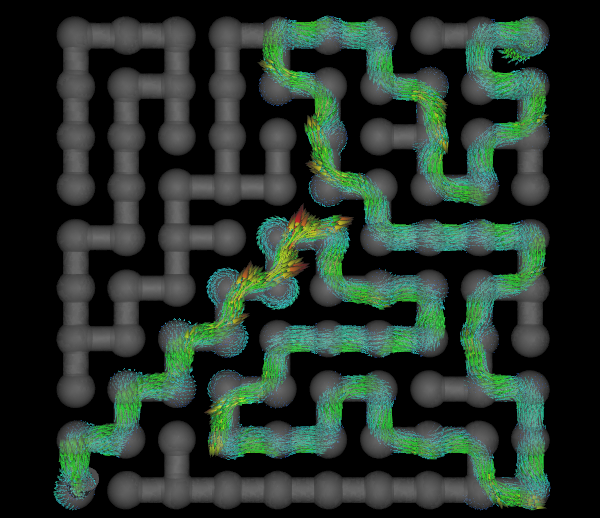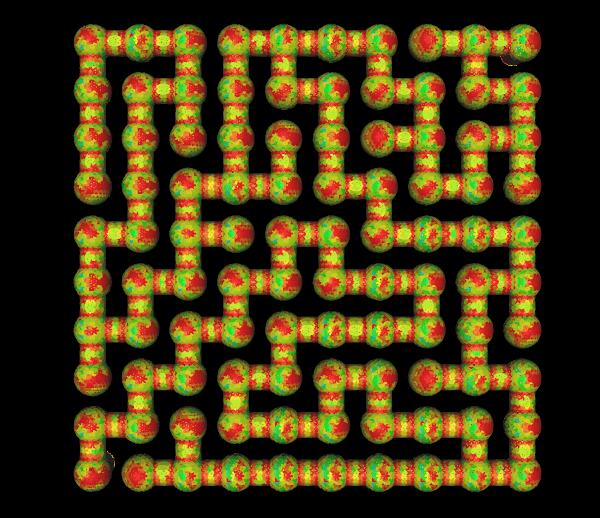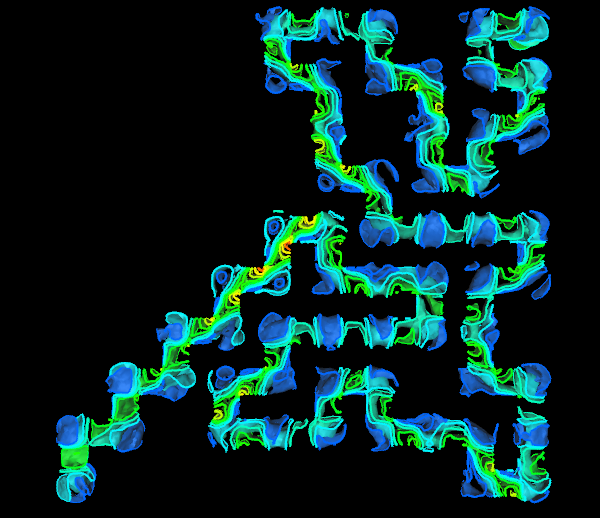
Amazing CFD
You already know that Computational Fluid Dynamics (CFD) is great at solving fluid dynamics problems, but did you also know it is able to literally solve mazes too? Prepare to be a-maze-d.
 CFD Maze SimulationVelocity vectors
CFD Maze SimulationVelocity vectors
First off you need to create a maze. In our case it will be a 2D maze. Fortunately maze creation is a little easier than CFD, and thanks to Erik Sweet and Bill Basener I had a head start as they provided a Python version of a depth-first, backtracking maze generation algorithm. Recall that Caedium uses Python scripting for automation, so it was a short step to adapt the original algorithm to automatically create spheres for maze points and cylinders for interconnects as determined by the algorithm.
 Maze Geometry
Maze Geometry
With the maze created in Caedium I manually added inlet and outlet pipes and then united all the volumes into a single watertight flow volume. I set up the physics in the usual way by assigning air as the substance to the flow volume and setting the boundary conditions, i.e., walls for all faces except the inlet and outlet.
 Maze Surface Mesh
Maze Surface Mesh
Fluid being fluid it will trace the shortest unobstructed path through the maze, so I setup two views to show iso-surfaces of velocity magnitude and velocity vectors within the flow volume. Then I ran the simulation.
 Iso-Surfaces of Velocity MagnitudeCFD maze simulation
Iso-Surfaces of Velocity MagnitudeCFD maze simulation
The results clearly show the solution path as indicated by the velocity vectors for an amazing finale.
 Velocity VectorsCFD maze simulation
Velocity VectorsCFD maze simulation
Recent blog posts
- CFD Simulates Distant Past
- Background on the Caedium v6.0 Release
- Long-Necked Dinosaurs Succumb To CFD
- CFD Provides Insight Into Mystery Fossils
- Wind Turbine Design According to Insects
- Runners Discover Drafting
- Wind Tunnel and CFD Reveal Best Cycling Tuck
- Active Aerodynamics on the Lamborghini Huracán Performante
- Fluidic Logic
- Stonehenge Vortex Revealed as April Fools' Day Distortion Field
